Head into costume storage with CHM costume collection manager Jessica Pushor as she discusses the iconic costume pieces that came out of the partnership between dancer and choreographer Ruth Page and artist Isamu Noguchi.
Ruth Page (1899–1991) was a legendary ballerina and innovative choreographer. She was the first American guest ballet soloist with the Metropolitan Opera, and she brought world-class dance to Chicago’s stages as artistic director of the Chicago Opera Ballet, Lyric Opera of Chicago, and The Ravinia Festival. Her legacy continues to be celebrated in Chicago through the Ruth Page Foundation, which oversees the Ruth Page Center for the Arts.
Page donated nearly one hundred dance costumes, designer dresses, and accessories to the Chicago History Museum’s costume collection. Many of the Museum’s earliest and most breathtaking Christian Dior garments were worn by Page and were featured in past CHM exhibitions Dior: The New Look (2006) and Chic Chicago: Couture Treasures from the Chicago History Museum (2008). However, it is her dance costumes that are thought to be some of the most culturally significant artifacts she donated to the Museum.
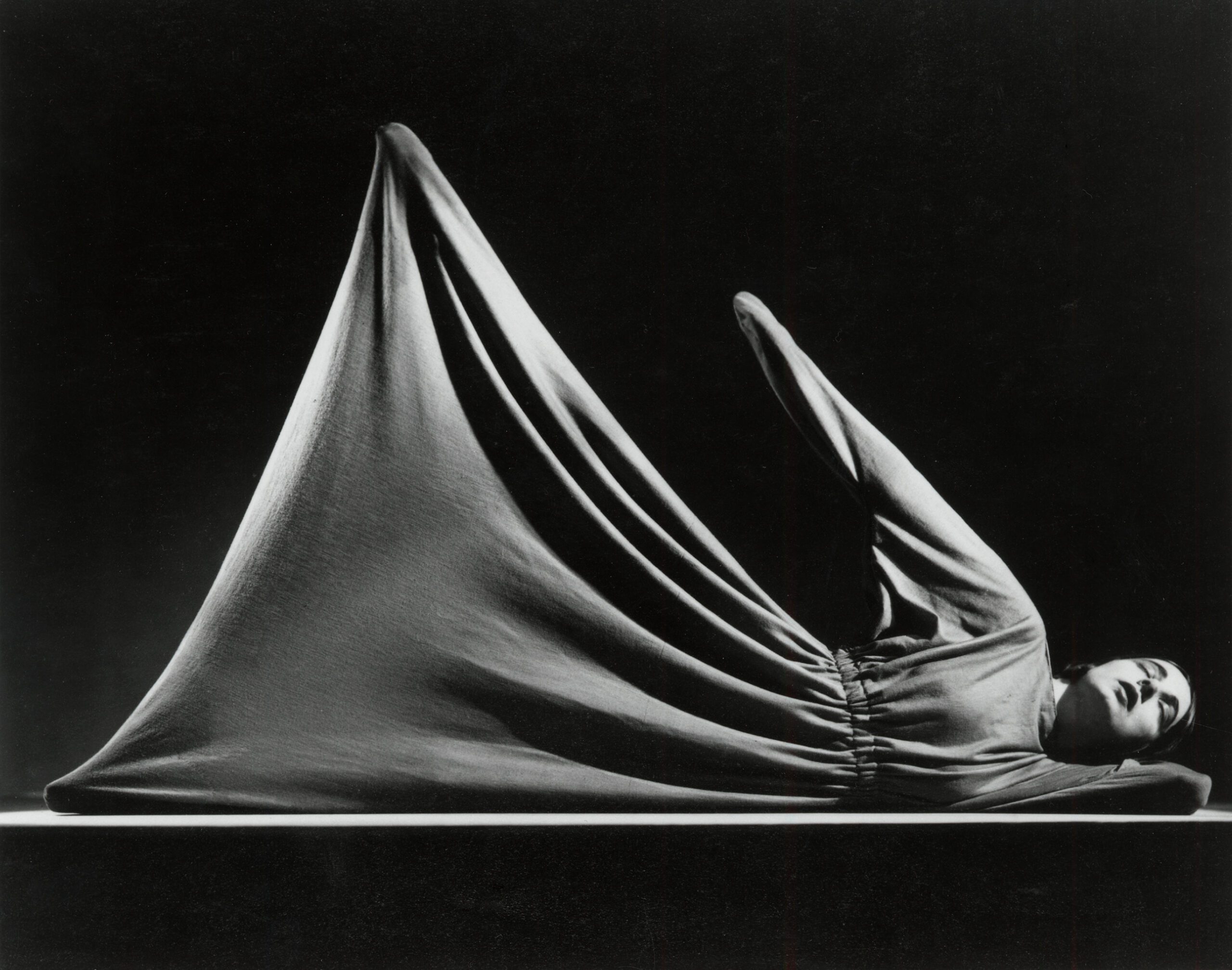
An undated photograph of Ruth Page in one of her costumes for Expanding Universe. CHM, ICHi-031053
In 1932, Ruth Page began a personal and professional relationship with Japanese American artist Isamu Noguchi (1904–88). During their collaboration, Noguchi created two blue wool sack costumes for Page. The forms and shapes she created in these costumes by stretching and contouring the fabric with her body would be forever memorialized by Noguchi in ink drawings, sculptures, and stunning photographs. Ruth Page would later donate these two iconic sack dresses to the Museum in 1979.
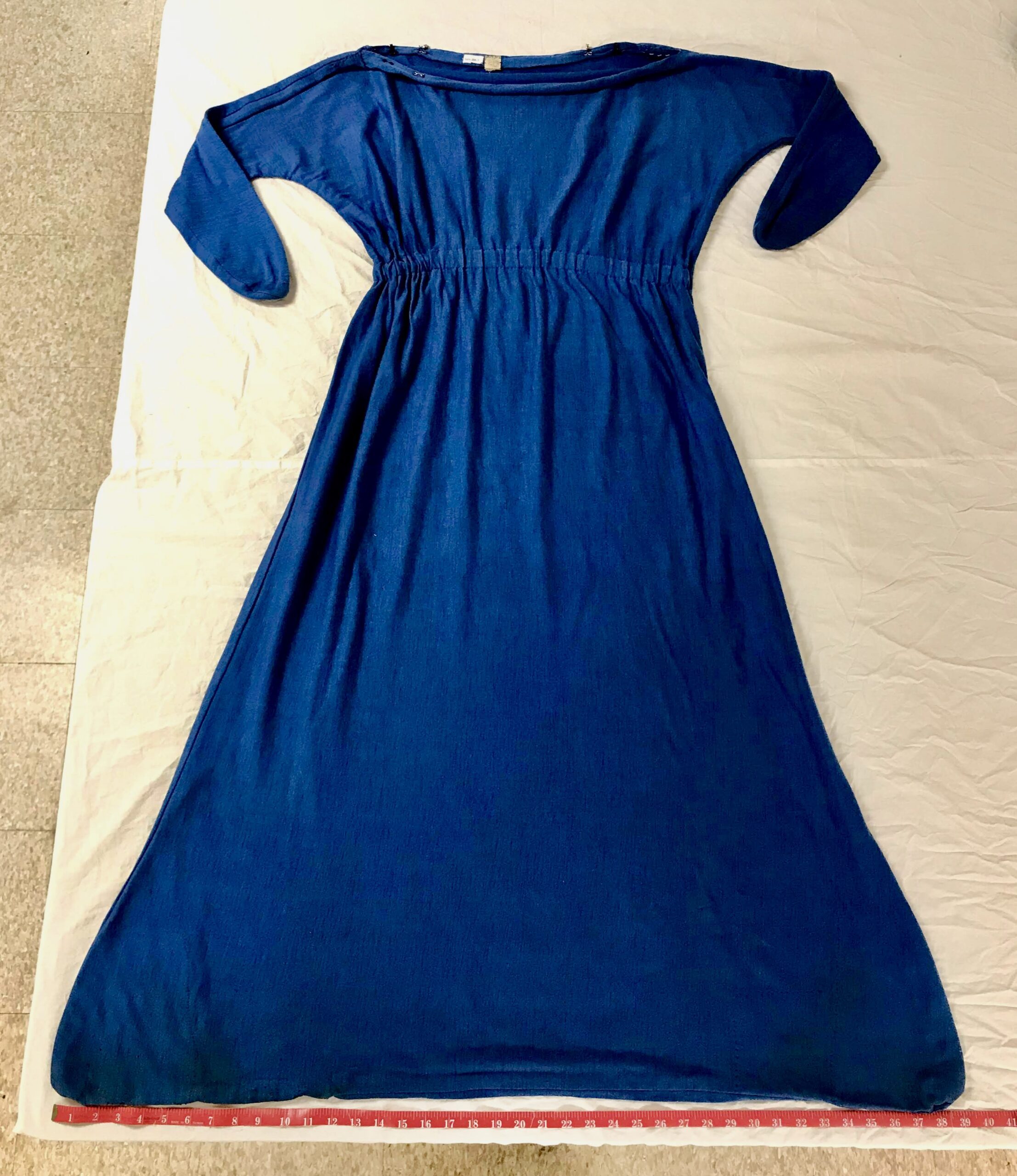
The garment (above) and a close-up of its labels (below). The base of the garment measures about 39 inches.
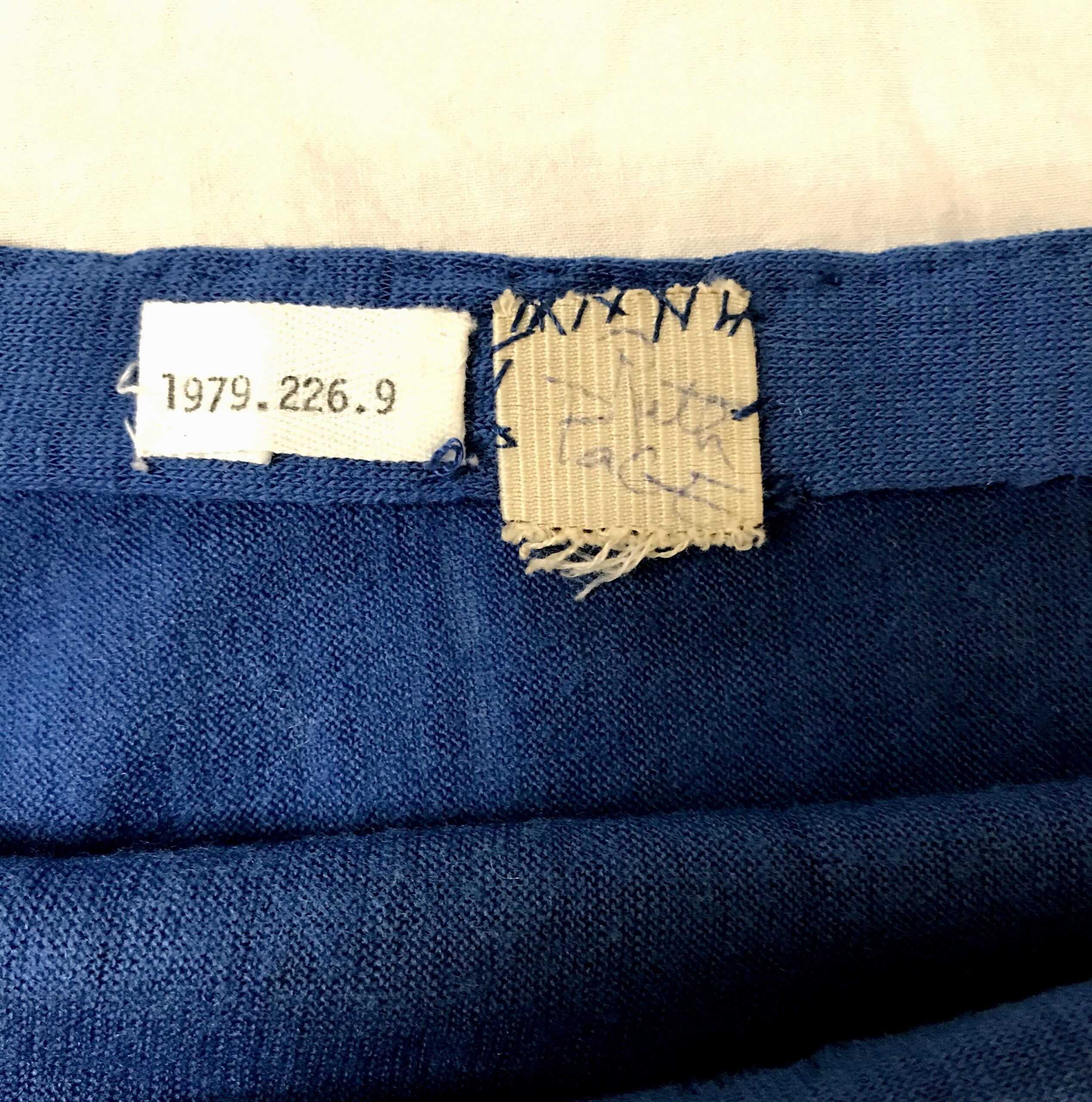
The first costume, 1979.226.9, has sleeves but no openings for the hands, an elastic waistband, and is closed at the bottom. [Ed. note: This garment is currently on display in Dressed in History: A Costume Collection Retrospective, which closes July 27, 2025.] The only opening is an open slit at the neck. This sack dress is the inspiration for Noguchi’s sculpture Miss Expanding Universe (1932), which Page bequeathed to the Art Institute of Chicago.
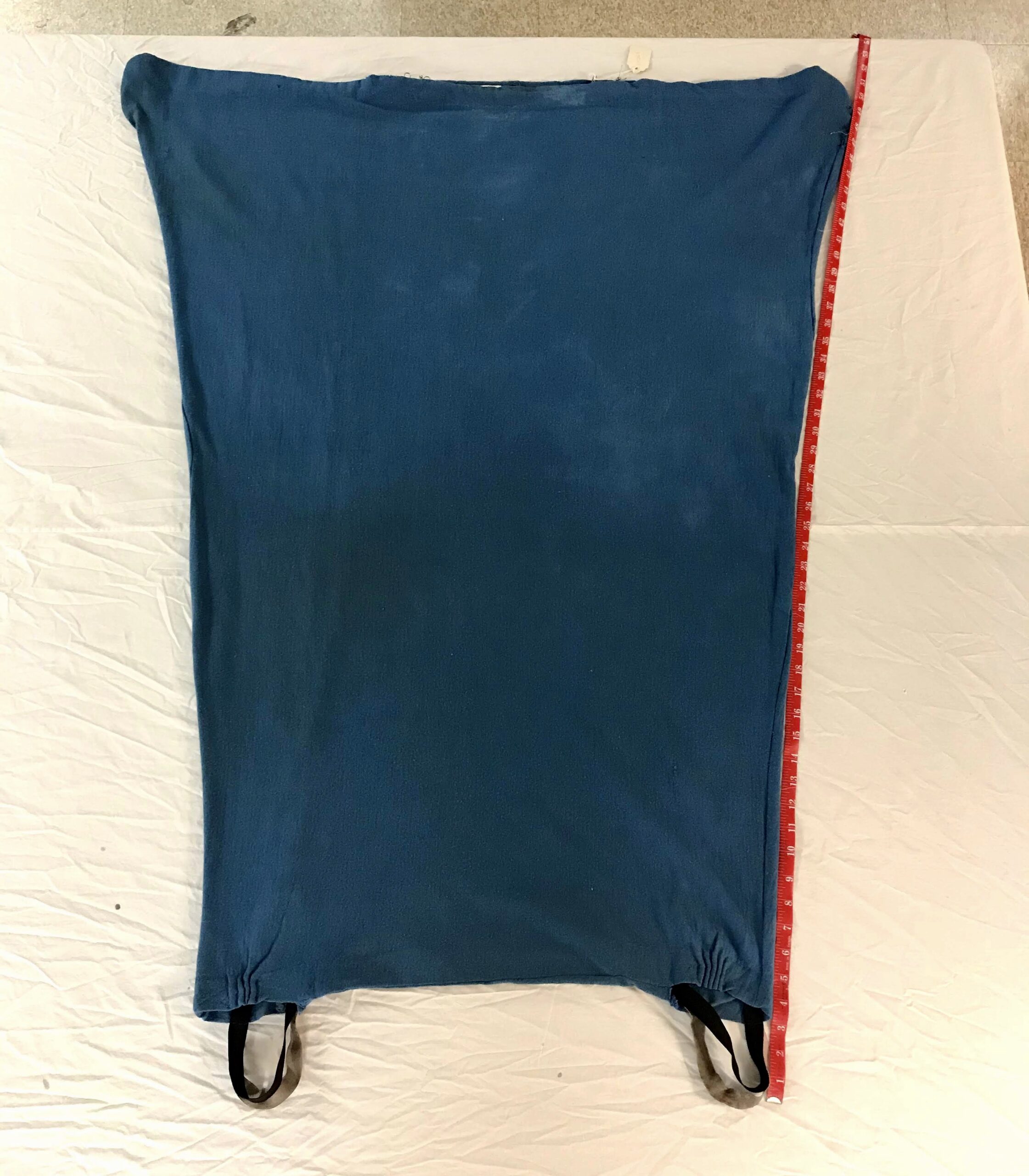
Ruth Page was a petite woman, and this garment measures about 51 inches from the stirrups to the top corner.
The other sack dress, 1979.226.10, is rectangle of blue wool with a small slit opening at the top. This costume does not have armholes or sleeves, but has two openings at the bottom with stirrups for the feet. Page wore these costumes in a ballet she choreographed and performed in 1932 called Expanding Universe, which repremiered in 1933 as Variations on Euclid.
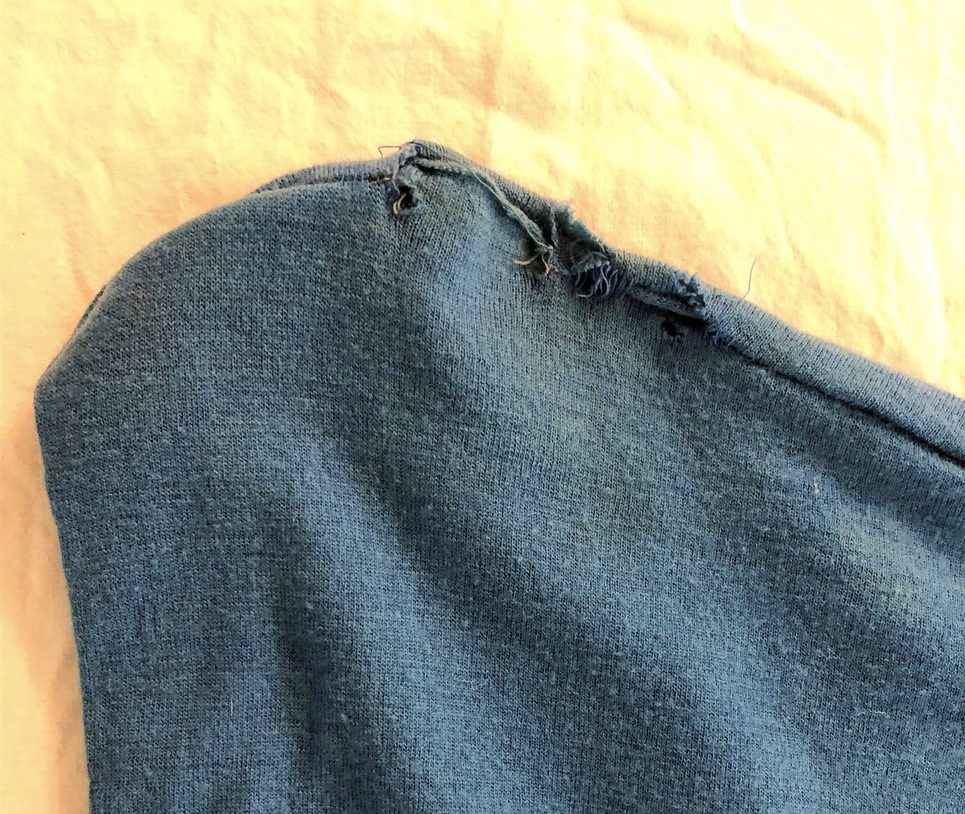
The fabric along the garment’s seam shows wear and tear.
Both costumes show wear and have many repairs and patches at the corners where Page pulled, grabbed, and pushed the fabric with her hands and feet. You can see tears along the seams and discoloration from use on each piece. The elastic stirrups have also worn out from use and were replaced by the Museum the last time this object was on view.
Noguchi and Page would collaborate again in 1946 when he designed the costumes and sets for The Bells, a ballet choreographed by Page based on Edgar Allan Poe’s poem of the same name. However, this second project did not create the same iconic artwork and imagery as Expanding Universe. Ruth Page passed away in 1991, and a sketch of Ruth Page by Noguchi in the sack dress is etched on her gravestone in Graceland Cemetery.
Additional Resources
- Listen to Studs Terkel’s 1978 interview with Ruth Page
- Watch Variations on Euclid a.k.a. Expanding Universe, Chicago Film Archives, c. 1938, Ruth Page Collection
- Ruth Page’s papers can be found at the Newberry Library
- Learn more about Page’s work in Chicago in Liesl Olson, “What did a 1930s ballet say about cultural appropriation in modernist Chicago?” Chicago Reader, March 28, 2019.